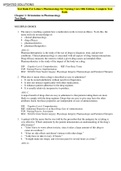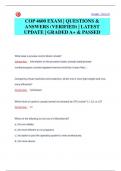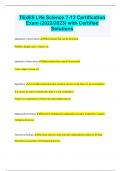Summary
Summary - Law and Economics I: Economic theory and the Law (3013L6Q0KY) 2023 final exam
- Course
- Institution
This is a summary for the first part of the minor in Law and Economics I: Economic Theory and the Law for the final exam in 2023 taken at the University of Amsterdam. Its very extensive, covering lectures and readings. Good luck for the exam.
[Show more]












